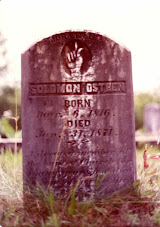 |
| Dr. E. Gaine Cannon, founder of Albert Schweitzer Memorial Hospital |
After retiring from a busy practice in Pickens, SC, he moved
to Balsam Grove in Transylvania County for much needed rest and relaxation.
Instead, he found a great need for medical care among the residents there and
became busier than ever serving as the only doctor for miles. Inspired by the work
of Nobel Prize-winning Dr. Albert Schweitzer, Dr. Cannon decided to open a
hospital in his mountain community. He formed a close relationship with Dr.
Schweitzer after traveling in Africa, and so when Cannon approached Schweitzer
about naming the hospital in his honor, Schweitzer warmly agreed. To date, it
is the only hospital in the U.S. to bear Schwetizer’s name.
 |
| Albert Schweitzer Memorial Hospital |
Dr. Schweitzer’s philosophy of medicine included “Reverence for Life”. When put into practice, this meant that Dr. Cannon would give medical treatment to anyone regardless of their ability to pay. He requested that each patient bring two large river rocks each time they visited. The collection grew and was used as an exterior for the hospital building. Construction was slow, however, due to the fact that materials and labor were mostly acquired through donations and volunteer work. It was 11 years before the clinic was complete, and even then, that was only the outside.
 |
| A Christmas card sent by Dr. E. Gaine Cannon |
Gaine Cannon died of a heart attack in 1966 without seeing his dream come to fruition. The community didn’t give up on his dream though, and in 1980, it opened as the Balsam Grove Medical Clinic. Unfortunately, it only operated for three years, due to their inability to secure doctors to staff the rural facility. The building has most recently been Brown’s Grower Supply and Nursery, though it isn’t open to the public at this time. The Board that managed the land sold it and used the profits to create the Balsam Grove Community Center, which is a hub for connection and community for residents today. A memorial was placed at the site to honor Dr. E. Gaine Cannon’s contributions to the community. A biography of Dr. Cannon’s life can be read in Mountain Doctor by LeGette Blythe and is available at the library.
Photographs and information for this column are
provided by the Rowell Bosse North Carolina Room, Transylvania County Library.
This article was written by Local History Librarian Laura Gardner. For more
information, comments, or suggestions, contact NC Room staff at ncroom@transylvaniacounty.org or 828-884-1820.



































